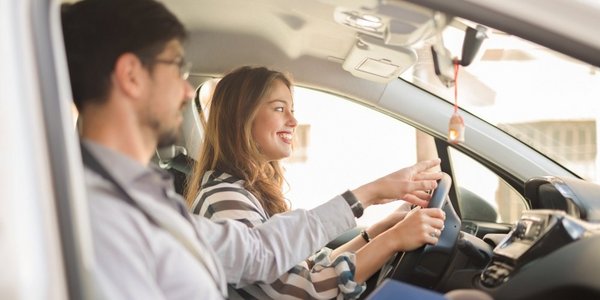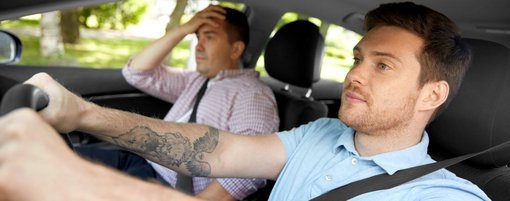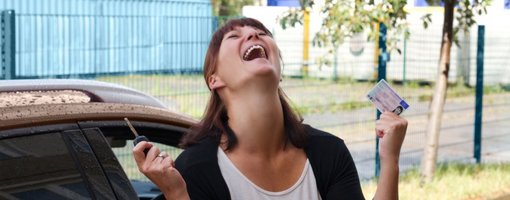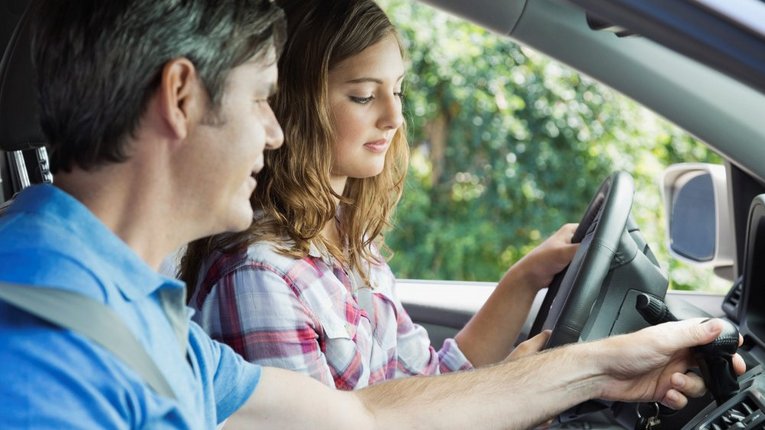
New Guidline
What to expect in the practical driving test
Since January 2021, the Optimized Practical Driving Examination (OPFEP) is in effect. It applies to all classes, regardless of whether you want to learn to drive a car, motorcycle or truck. The aim of the Optimized Practical Driving Test is to digitize and standardize driving training in Germany. For you, the practical driving test will be more transparent, fairer and also a bit longer, but not harder.
Practical Driving Test lasts 55 minutes
Your practical driving test will take longer. Because new driving tasks, e.g. turning or changing lanes on the highway, are now specifically tested and there is a feedback discussion at the end, the practical driving test now lasts 55 minutes instead of 45 minutes. That is 10 minutes more than before.
Driving tasks and your behavior:
This is what the inspector looks at
In addition to normal driving and parking, you have to complete eight driving tasks from five different driving competence areas. These include, for example, driving in traffic circles or changing lanes on freeways, or whether you observe all safety requirements when turning.
These are the 8 driving tasks
- Entering and leaving lanes, changing lanes
- Making curves
- Passing, overtaking
- Crossing, merging, entering
- Roundabout
- Rail traffic
- Stop, crosswalk
- Driving straight ahead
These are the 5 driving competence areas
- Traffic observation
- Vehicle positioning
- Speed adaptation
- Communication
- Vehicle operation/ environmentally conscious driving
The examiner also observes your behavior and driving style. For example, he tries to find out whether you can systematically assess the traffic situations around you. Therefore it can happen that you drive a certain route twice. This does not mean that you did something wrong the first time. By repeating the test, the examiner only wants to check whether you are able to correctly assess the traffic situation at this point again.

Objective criteria ensure that you are assessed fairly
Failed because the examiner didn't like you? He was much better with your friend and turned a blind eye to the same mistake? That can't be the case. Because there is a basis for the examiner's assessment.
All driving tasks and the associated assessment and decision criteria are listed in the driving task catalog and are described in detail there. It is therefore clear what constitutes good and above-average performance and which errors mean immediate failure for you. This makes your practical driving test transparent and the examiner's assessment objective.
The driving task catalog is the basis for your training.
Because all driving tasks are clearly listed in the new test guideline, your driving instructor knows exactly what may be required in the practical driving test. Tricky situations in your test area or classic driving tasks such as changing lanes on the highway or driving through a traffic circle can be explicitly practiced again before the driving test.
Electronic test protocol: This is why the examiner has a tablet with him
While driving, the examiner types all the completed driving tasks into the digital test log on the tablet. The program records which driving tasks you completed, which situations you mastered, and where you made any mistakes. Based on these entries, your driving skills are evaluated and a decision is made as to whether you have passed or not. However, this is still done by the examiner and not by the program.
Electronic test protocol:
This is why the examiner carries a tablet
While driving, the examiner types all the completed driving tasks into the digital test log on the tablet. The program records which driving tasks you completed, which situations you mastered, and where you made any mistakes. Based on these entries, your driving skills are evaluated and a decision is made as to whether you have passed or not. However, this is still done by the examiner and not by the program.
Feedback included
After your test you will get a detailed feedback interview. No matter how it went. The examiner will assess your driving skills and explain what you did well and where you need to pay more attention when driving. A written summary, the so-called feedback protocol, on your strengths and weaknesses in the test is also provided - either by e-mail or via QR code on your cell phone!



